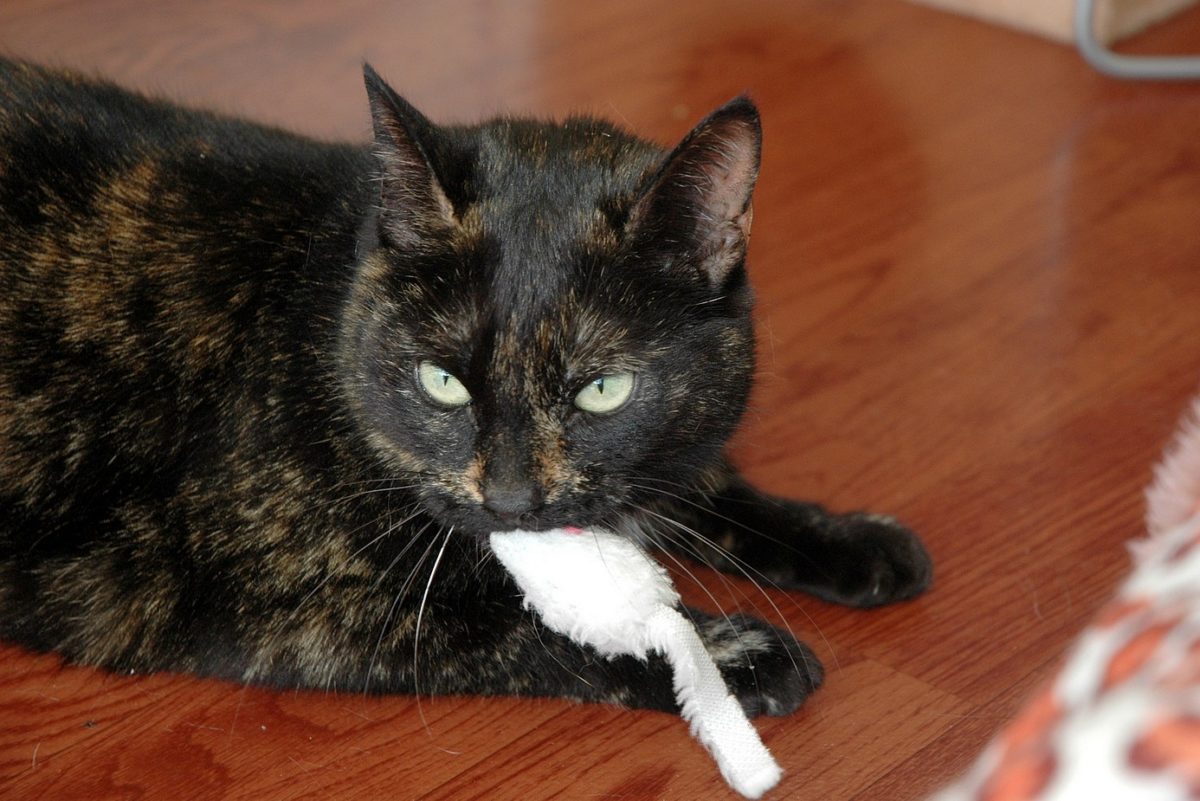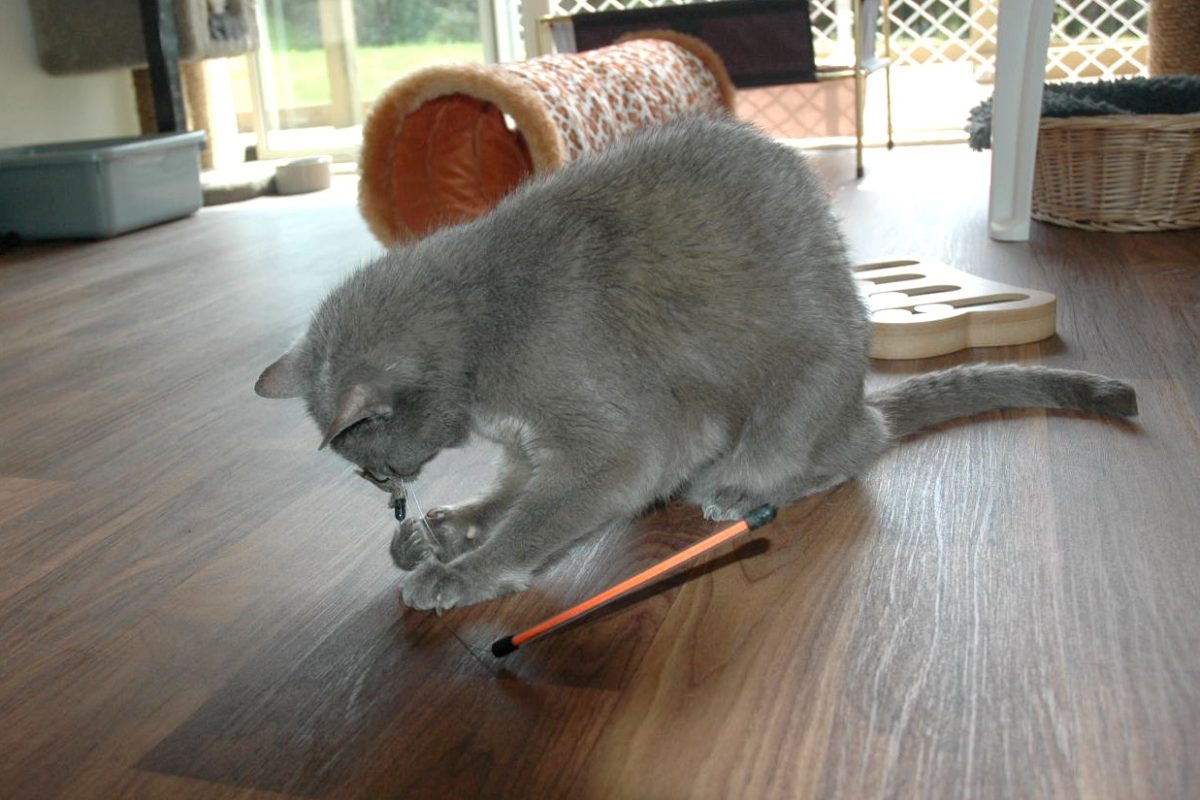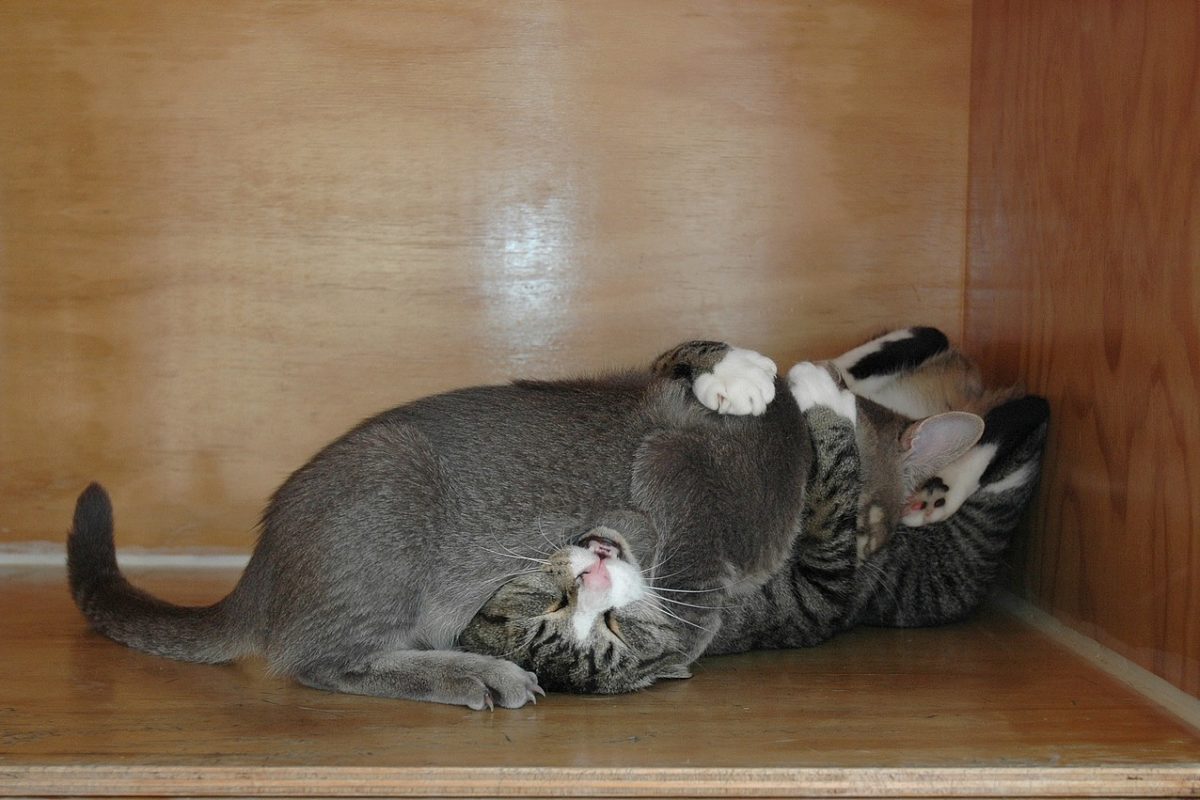Playtime With Your Cat
by Cat Hotel Stoney Creek, posted with permission.


Most cats enjoy interacting with their owner and playing is a great way to develop the bond between you and your cat.
For a kitten, play is essential for his development to maturity. For most adult cats, it is a pleasurable part of domestic life. As a cat ages, his mobility and energy may lessen but gentle games can still be enjoyed.
Indoor cats will need plenty of stimulation and play – particularly when young – to prevent them from becoming bored. A cat which has access to the great outdoors will find plenty of interest: walls and trees to climb, prey to stalk, leaves to chase and possibly other cats for company.
Cats vary in their motivation to play but most cats will play and benefit from the opportunity to do so, no matter what age. Understanding the specific likes and dislikes of your cat will enable you to provide the best possible opportunities for play.
Some clues to ideal ‘playtime’ can be noticeable in your cat’s behaviour:
- Spontaneous play with objects
- Sudden staccato movements
- Dilated pupils, ears flattened laterally (no other cat around)
- Frozen postures, crouched legs
- ‘Mad half hour’
- Vocalisation
A cat highly motivated to play:
- Plays frequently (and spontaneously) with objects
- Is receptive at any time of day
- Is not choosey about objects used for play
- Rarely tires (you give up first)
- Can be destructive, often tearing or consuming toys
- Responds to ‘conditioned stimulus’, e.g. the sound of a drawer opening that contains toys
Games to play:
Toys can appeal to all the feline senses: sight, sound, scent, touch and taste. Movement is a great stimulus and most toys are designed to be used actively. Gentle noise (e.g. a tinkling bell hidden in a ball) may be attractive, but some cats will be alarmed by louder noises. Catnip (dried catmint plant) rubbed on a toy or put in a stuffed toy appeals to most cats and is particularly important for old or blind cats. Some cat toys feature different fabrics, encouraging your cat to rake his claws or rub his chin and neck.
Each cat will have specific likes and dislikes regarding toys and these will be based on some or all of the following:
- Texture
- Shape
- Size
- Scent
- Noise
- Movement e.g., random, quick, stop/start
- Owner interaction
- Time of day
- Location
- Presence of other cats


Establishing what stimulates your cat is based on trial and error, although some commercially available toys have majority appeal.
A very popular toy is the ‘fishing rod’ feather toy (‘The PurrSuit wand’, also known as ‘Da Bird’. It brings out the kitten in most cats, even in senior cats. The PurrSuit wand comes with a spinning feather prey that spins through the air simulating a flying bird and for a cat it looks and sounds like the real thing! It is also highly recommended for use in play therapy for behaviour issues and combating weight issues. The feather attachments are made with two pheasant flight feathers that spin, two natural pheasant flank feathers and a coloured Turkey marabou feather. For more info, please have a look at the ‘purrs in our hearts’ link below.
Toys that contain high quality dried catnip (using the dried flowers and leaves of the catmint plant only), small objects on wire that move erratically, small fur mice and even simple toys such as ping-pong balls are very popular too, and can provide hours of fun and exercise. A ping-pong ball is light enough not to do any damage around the house and the right size for a small paw to bat. If you have stairs in your home, throw the ball up to encourage your cat to chase it or drop it gently from the top so that your cat sees it bounce from step to step.
Types of play:
Self-play (solitary)
- Running around
- Self-play (object)
- Toys
Interactive play (social with other cats)
- Chasing
- Play fighting
Interactive play (social with humans)
- Fetch games
- ‘Fishing rod’ feather toys
- Laser pointer (never point at the cat’s face as it can damage his eyes, so better not get one when you have small children)
Explore, search, forage play
- Cardboard boxes
- Cat activity centres
- Cupboards, wardrobes
- Bags
Play explores all parts of the predatory sequence: search, stalk, chase, pounce, catch and manipulate. Try to mimic the natural circumstances as closely as possible: play in short bursts of activity before feeding times and end the game on a positive note when your cat catches the toy.


Rules of the game:
Cats are naturally excited by novelty, so toys left out in your home all the time will soon lose their appeal. All toys should therefore be rotated randomly and put away when not in use. Games should be ended on a positive note before your cat gets bored. If your cat appears to become over-excited or over-stimulated by a particular toy, stop that activity and redirect his attention to something else. Any toys that are interactive and require your involvement are good. Play should mimic natural predatory behaviour so short bursts of activity at frequent intervals are best.
Playing with kittens:
If you have a kitten it is important to teach basic good manners. He must be discouraged from scratching, clawing or biting. This may be fine when little but as his ‘weapons’ become larger and your cat stronger he can cause damage and pain. Small feathers or toys dangling on the end of a rod and wire or string keep your hands a safe distance from his claws.
Play and the older cat:
Even elderly cats will enjoy the stimulation and gentle exercise of a game that is adapted to suit their level of mobility. Even if your cat lies down to play it will still be beneficial, both physically and mentally.
Encouraging social play between cats:
Cats are more likely to indulge in social play with each other if the environment is considered safe: obstacles and varying levels to give camouflage, hiding opportunities (like play tunnels) and the chance to access high places for ‘timeout’. The opportunity to break the stare in social play fighting lowers tension and stops it from escalating. Indoor areas designated for play should therefore contain some or all of the following to get the maximum benefits:
- Cardboard boxes with entry/exit holes
- Furniture at various heights
- Tables
- Cat activity centres
All objects should be positioned in such a way that each cat can move around it and approach from any angle.


Interventions:
It may be necessary on occasions to intervene in social play between cats that has escalated and risks injury. Do not use your arms or legs: in a heightened state of arousal the cats will not distinguish between you and each other and you will get injured. If the escalation has not progressed to physical fighting but has reached the stage of direct staring, an opportunity to break the stare can be sufficient. You can distract the cats with a ‘fishing rod’ feather toy or a laser pointer (never point at the cat’s face). Physical contact can be interrupted by simply throwing a towel over the cats. If the problem persists it may be necessary to seek advice from your veterinarian.
Links:
https://icatcare.org/advice/playing-with-your-cat/
https://www.purrsinourhearts.co.uk/shop/index.php?route=product%2Fproduct&product_id=423


